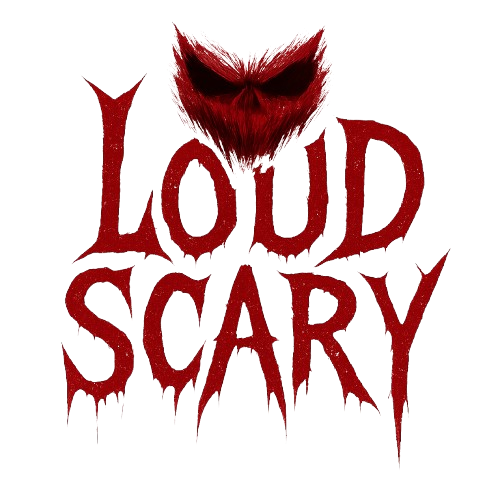The Creepiest Creatures That Lurk in Folklore Around the World
 |
| Creepiest Creatures That Lurk in Folklore |
For as long as people have been afraid of the dark, they’ve whispered about the things that move in it. Monsters, spirits, witches call them what you want. In folklore, they’re not entertainment. They’re warnings, shaped out of pure fear and passed down because somebody, somewhere, swore it was real. And if you think about it too long, those old stories don’t feel so distant. They feel like they’re still watching.
The Aswang of the Philippines
It always starts with a sound. A flicker of wings above the roof, too heavy to be a bat, too quiet to be a bird. You tell yourself it’s nothing. That’s what people say in the Philippines right before they swear the Aswang was circling. The Aswang is a shapeshifter. By day it looks ordinary. By night it turns into something worse a flying creature with its body split in two, tongue drawn long and sharp, sniffing for unborn children. Mothers tell each other to hang garlic or spread salt on the windowsills. Maybe it works. Maybe it doesn’t. But if you’ve ever woken to a sudden silence, every hair raised, you’d understand why people still tell the story.
Skinwalkers in the Desert
The desert has a way of making you feel exposed. Just stone, wind, and shadows that stretch too long. Among the Navajo, there are whispers of Skinwalkers witches who wear the skins of animals, or worse, the faces of people you know. The accounts have one thread in common: you hear something that shouldn’t be there. Your name called from just outside. Footsteps that match your own but out of sync. Someone knocking. Someone imitating a voice. People avoid even saying the word because speaking of Skinwalkers is said to draw them closer. You can’t shake the edge of paranoia not out there in the open space, not even at home.
The Wendigo Hunger
Snow covers sound. Out in the frozen woods, you can convince yourself nothing’s near, until you notice how wide the tree line is, how tall the shadows reach. That’s where the Wendigo waits: in stories told by the Algonquian people, it’s the spirit of hunger itself, a gaunt giant with bones showing through the skin, endless, starving eyes. The scariest part? It’s not that it comes for you. It’s that it grows inside you. Folklore describes the Wendigo as a sickness of the mind, corrupting people with greed or cannibalism, turning them into monsters. The way it spreads isn’t through claws or teeth, but through stories… and through hunger you can’t control.
The Cry of La Llorona
Hers is a bedtime story, told half like a warning and half like an echo. La Llorona, the Weeping Woman, drifts along rivers through the night. Legend says she drowned her children in grief and rage, then herself, and now she searches endlessly for them stealing away other children in their place. It starts quietly, the sound of crying. Not screaming, but something softer like a lullaby about to break. It drifts outside your window, following rivers or streets, and if you’re foolish enough to follow it, you disappear. Parents tell the tale to keep children close, though sometimes you get the feeling it’s not really for the kids at all it’s for the adults to remind themselves not to listen when the crying gets too close.
Baba Yaga in the Woods
Some monsters hide. Baba Yaga doesn’t. In Slavic folklore, she waits in a hut that literally walks on giant chicken legs, circling anyone who dares approach her forest. She’s a crooked witch with iron teeth, a hunger for flesh, and a temper that decides whether you live, die, or if you’re lucky leave with knowledge. She’s more terrifying because you don’t know what you’re going to get. In some stories, she tears intruders apart. In others, she helps them if they prove themselves. Either way, once you hear the clatter of talons in the brush or the suspicious creak of a cottage that wasn’t there before… it’s too late.
The Jinn in the Shadows
In Middle Eastern folklore, the Jinn are everywhere. Not human, not ghost, not exactly demon. Born from smokeless fire, they slip unseen into the everyday through doors, mirrors, and even dreams. Some are harmless, mischievous. Others? They ruin entire households. Stories of the Jinn often sound familiar in a way that’s hard to dismiss: voices calling names from empty halls, shadows that dart across walls, sudden sickness or lost time. You’re told not to call out to them, not to invite them, not to dig too deep in thought about what they want. Because maybe just maybe they listen back.
Why We Still Tell These Tales
Every culture has its version of the dark watcher, the shapeshifter, the spirit that waits by the window. They survive because they touch nerves we can’t cut.
- The Aswang goes for what we hold fragile.
- Skinwalkers twist our voices and our trust.
- The Wendigo shows us how hunger becomes madness.
- La Llorona drowns us in grief that never ends.
- Baba Yaga is fear of power we can’t predict.
- The Jinn remind us we’re never alone, even when we think we are.
Folklore monsters are thresholds. They exist in the doorway between waking and dream, safety and danger, this world and one we can’t quite see.
Closing Thoughts
Do people still believe in these creatures? Some would laugh and say no. But ask someone who heard footsteps circling their home at night, who caught the faintest cry on the wind, or who’s sat still while shadows stretched too far and they’ll tell you the same thing. Folklore doesn’t need believers. It only needs listeners. And once you’ve heard these stories, really let them in, you start to notice The dark isn’t empty. It never was.


.png)